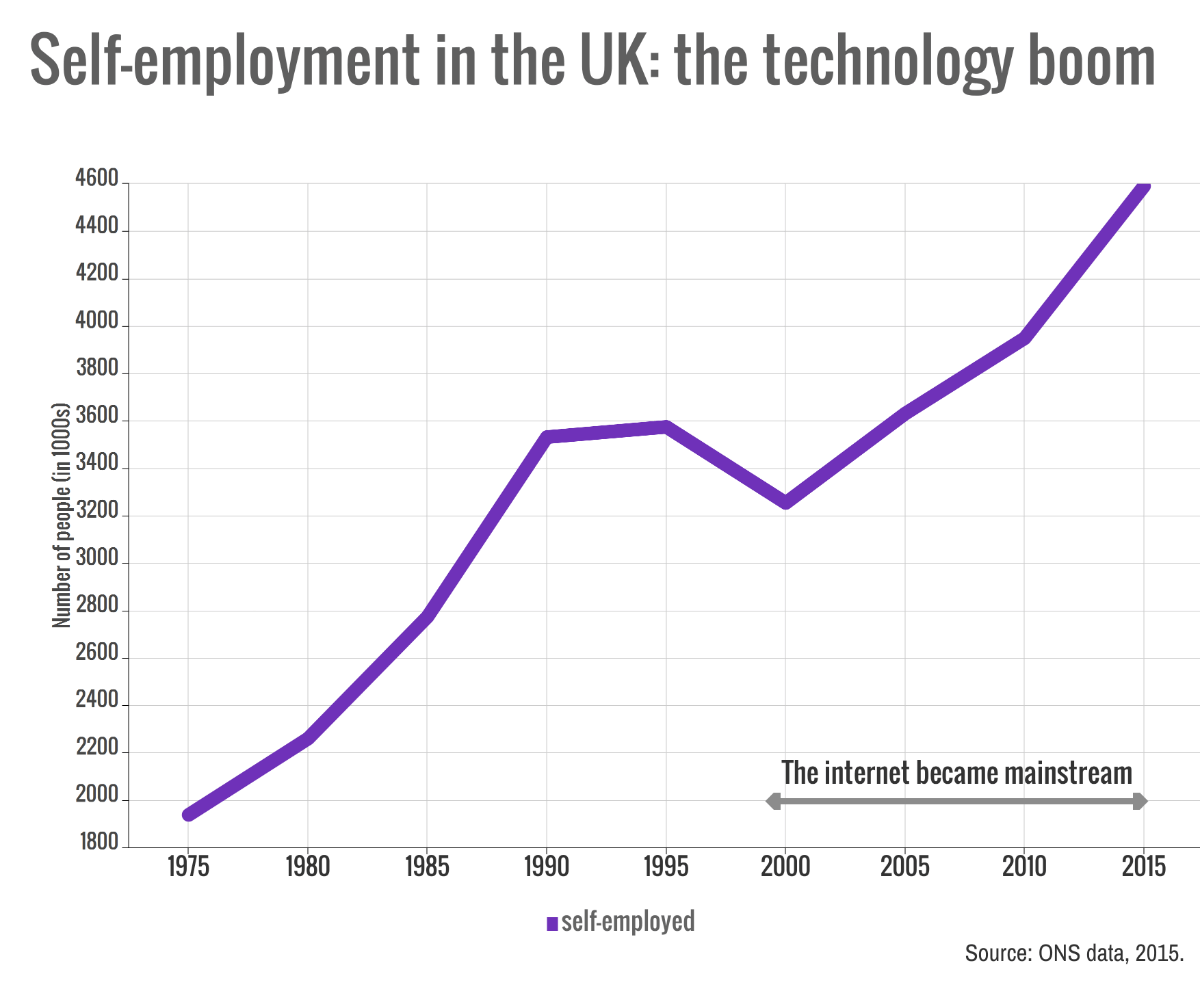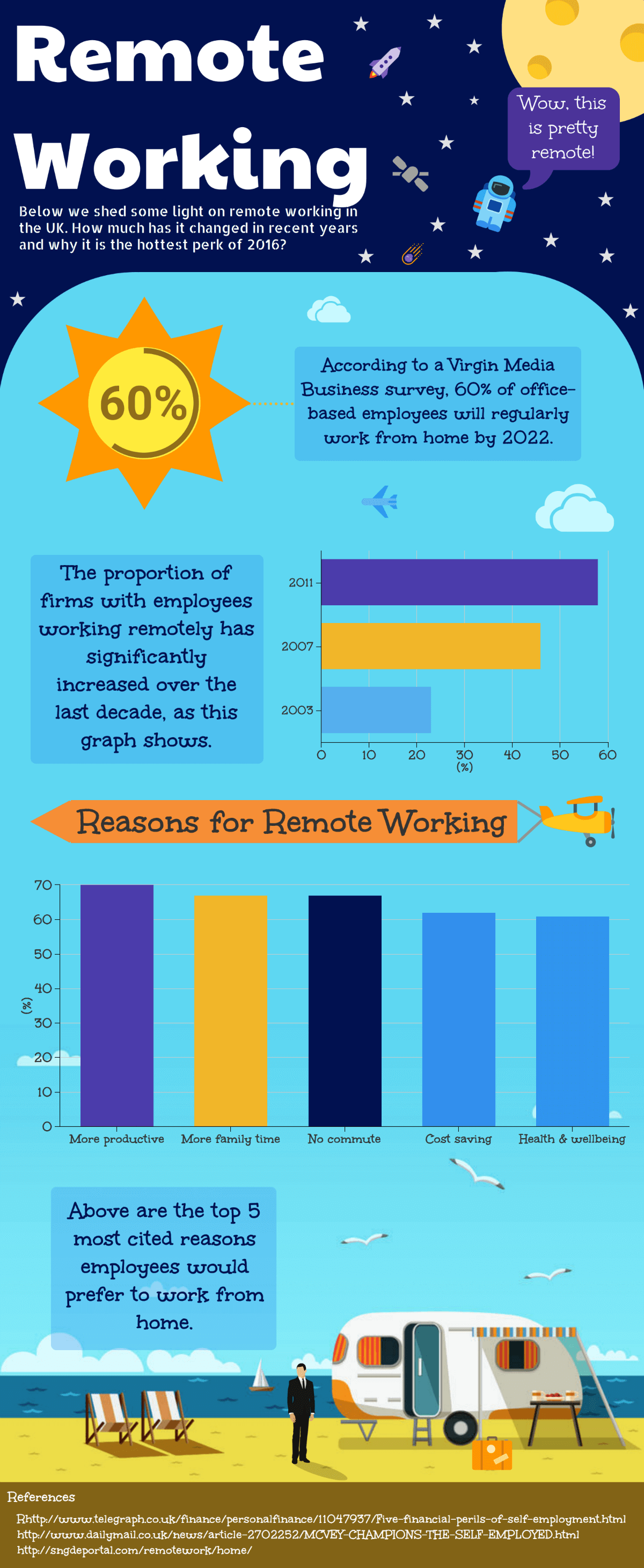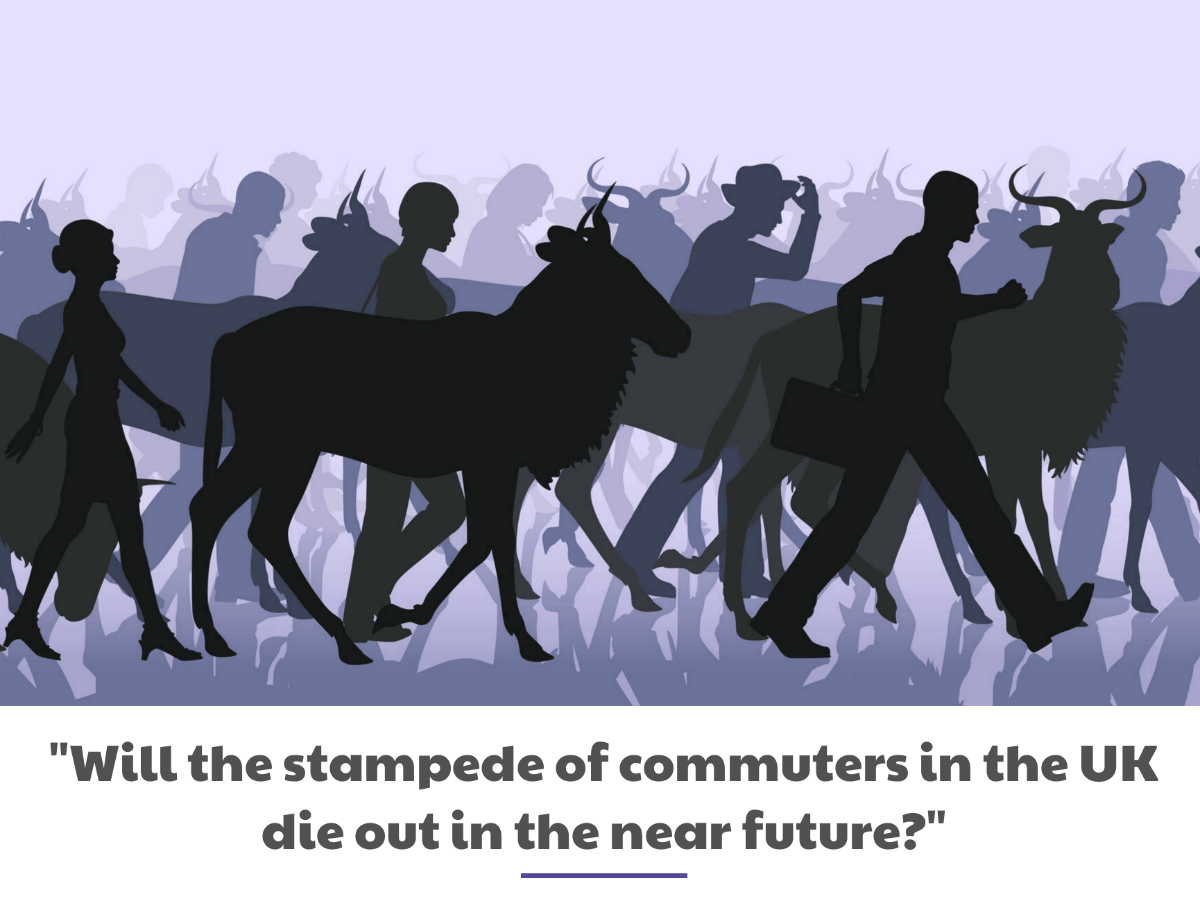I don’t know about you, but for me the term ‘remote working’ evokes the image of being on a beach in Fiji – complete with cocktail, laptop and one hell of a Wi-Fi signal.
The reality of remote working is actually much less exciting, but still very appealing. In a world where employees want to have a greater work / life balance, we take a comprehensive look at the pros and cons when it comes to working from home…
Negative preconceptions of remote working
If you dared to suggest the idea of remote working to your employer 10 years ago, chances are you would’ve been met with a very sceptical response. Premonitions of a productivity nose-dive, paired with an unflattering image of you in your jim-jams watching Netflix, would both serve to see your plucky request firmly rejected.
With in-office productivity at an all-time low in the UK, the idea of flexible working is being embraced more freely, and is something employers are willing to offer as a perk in order to secure the best talent out there.
The popularity of remote working as a benefit has gained significant traction over recent years, with millennials prioritising a more balanced lifestyle. In fact, people born from 1982 onwards (who we class as the millennial generation) prioritise remote working over things like having a sense of purpose or making an impact on society.
Remote working can be classified as any of the following:
- Working from home full-time, making occasional office visits for meetings.
- Office-based for ‘x’ amount of days through the week, home-based for the rest.
- Working off-site, but not necessarily at home.

As there are over 16.2 million millennials in the UK at the moment, making up one quarter of the total population, it is crucial that employers find new ways of appealing to this demographic. So let’s take a look at why remote working has become so popular, how it is possible, and what positive (and negative) impacts it can have.
So whether you’re an employer or an employee, you’re going to want to know this stuff…
What makes remote working possible?
The short answer to this is technology. Technology has changed everything: from the way we communicate, the way we socialise and even the way we recruit. So inevitably it’s going to change the way we work. It’s quite amazing just how many tasks can be completed from a mobile phone these days.
Aside from the basic functions of texting, making video calls and sending emails (oh and you can actually phone people too), there is a mass market of productivity apps out there that will turn your mobile into a task organiser, a word document, a photo editor or even a spreadsheet. Not that you’d want to fill out a spreadsheet on a 5 inch screen – but hey, it’s possible!
Did you know that, as of June 2014, employers are legally obliged to consider all flexible (including remote) working requests?
Then there’s the invention of tablets, which are effectively super-slimmed down computers. They’re the height of portability, meaning we can basically carry our entire office and day’s workload around in our briefcases or handbags.
So you get the gist of how remote working has become so popular, but what tools specifically make it possible? Whether you’re an employer considering switching to remote working, or an employee looking to request it, these are the essential tools required to make it happen…

Essential tools for remote working
The first must-have feature to make remote working easier is Google Docs. This genius bit of kit effortlessly connects entire offices with an online word processor that lets you create and format text documents and collaborate with other people in real time. From Google Sheets to Google Slides, this software is fantastic for sharing ideas and editing content.
The ability to leave comments, highlight, and view an archive of past revisions, makes this the ultimate collaborative tech tool. The fact that all shared documents are accessible to any member of staff who has access to a computer and a Gmail email address, makes this an essential remote working tool. Oh and (provided you’re online) the autosave feature saves with every stroke of the keyboard!
Then there’s Dropbox. Similar to Google Drive, Dropbox is an app which allows users to access an archive of shared information from any device / computer. So if you’ve left that crucial presentation on your home PC (but saved to your desktop’s Dropbox), fear not, as it will be accessible from your iPad, phone or any other device.
Then there’s Trello. Trello is a free (although there is a premium option) virtual organiser for your company. Much like Google Docs, Trello can be accessed by multiple staff members and updated live. It allows the completion of work on certain projects to be segmented and broken down into more bite-sized chunks.
THEN there’s remote printing: the facility to print documents at your office whilst you sit at home with a cup of Earl Grey. Business networks make this possible, as it allows all staff to operate with (cue cliche word of the day) seamless functionality.
Top tip: ensure you are connected to the correct remote printer, as printing off personal or confidential company files to a different one could be a little awkward!
The remote working epidemic
The very notion that working from home is more possible than ever before was exacerbated by the arrival of websites such as People Per Hour, Fiverr and even eBay. These websites provide a platform for people to sell a product or a service, without ever leaving their floral wingback chairs. It’s partly due to websites like these that we currently have more self-employed people in the UK than ever before.
It’s by no coincidence that this self-employment boom has been triggered by the rise of the internet. Just take a look at the correlation below:

So if people are able to build entirely new companies from their bedroom, surely they are able to work remotely as well?
Of course, being self-employed means that a consistency of hard work, motivation and productivity is absolutely essential to your livelihood. Companies who offer remote working to their employees worry that providing a salary guarantee every month would soon compromise working efficiencies and quality.
The classic human trait of complacency may well creep in; those coffee breaks become too often, early finishes too frequent and, the ‘surely one more episode of Breaking Bad won’t do any harm?’ excuses start to come out.
Is this actually the case though?
I guess it’s all dependant on the personality of individual employees. If they are self-motivated, target-driven individuals, then they are likely to thrive on the opportunity to work remotely. If however they lack such qualities, then giving them the option to work from home could cause productivity to take a tumble.
This is perhaps the biggest worry surrounding remote working for employers – the notion that productivity becomes (or seems to become) much harder to monitor.
So what can be done about it?
Aside from workers hitting deadlines, other measures can be put in place to monitor remote productivity, including clocking in apps, end-of-day task reports and daily Skype meetings. Just take a look at these productivity-tracking tools, all aimed at the remote working lifestyle.

So what’s putting the brakes on remote working becoming commonplace across the UK? Why, in 2016, when we have all tools necessary to work from home, do most of us still undertake a hellish commute every day?
Phil Flaxton, who is the CEO of Work Wise UK, believes it boils down to trust on the employer’s part: “The fear factor for many managers is: ‘If I can’t see you then how do I know you are working?’ Managers need training on how to assess a home-worker on their output, not their input.”
This is a very valid point. There has been many studies in recent years that show remote working staff are actually 12% more productive (on average) than office-based staff.
This productivity increase could be down to multiple things: the will to prove that they can work independently, the lack of office disruptions, and also the ability to have a (here’s that word again) seamless work and family life.
This all sounds great for the employee, but what are the benefits of remote working to an employer?

Benefits of remote working
Well the first obvious benefit is the morale and productivity of staff. Remote working is a massive perk to those with a busy family life, so by offering this flexibility will alleviate them of significant stress.
Such stress would only be damaging to a regular working day in the office anyway and, by letting them work from home, will only motivate them even more to prove that they are capable of delivering the same workload.
Reduction in overheads
Another benefit to the employer is the significant reduction in overheads. Costs that can be reduced (or avoided entirely) include premise leasing, utilities, cleaning services, coffee and water expenses, office supplies and furniture.
For smaller businesses, reducing or abolishing these overheads could just make the difference between turning a profit or not.
Retention rates
Studies have shown that much higher levels of job satisfaction were felt by remote workers – with 25% citing lower stress levels, 73% claiming to eat healthier and 76% feeling more loyal to their company.
80% of the respondents reported having a better overall work-life balance.
Whilst all of these sound like ’employee’ benefits, they do give the employer one big, cost-saving perk – and that’s retention. If you want to understand exactly how much companies spend on bad hires every year, check out our article here.
By giving your employees the work-life balance they desire, you’re increasing the likelihood that they’ll want to stay with you – hopefully reducing your hiring costs over the coming years.
Less sick days
Did you know that around 78% of people call in sick because of stress or personal issues? Well guess what? Remote working happens to reduce stress levels. You can see where this is going.
Giving employees the flexibility to work from home will reduce their likelihood to utilise sick days – potentially saving companies thousands in lost productivity and paid leave. Plus it reduces the chance of illness spreading around the office!
Working from home can also mean that minimal productivity will be lost when attending medical appointments. Usually workers will book a full or half-day when making a visit to the doctor, meaning the time before and after is ultimately lost.
If the employee works from home however, they are more likely to work up until the appointment time, and return to working afterwards.

Drawbacks of remote working
Naturally, there are some disadvantages to remote working. While technology allowing us to complete so many tasks from anywhere is a good thing, it is also its ultimate downfall. Our complete dependence on technology can be worrying for companies (and employees) as, if it fails in any way, potentially all of the cogs in the business can grind to a halt.
A particular worry for internet-based businesses, or sales companies, the reliance of a solid internet connection or telephone lines is crucial to turnover. But what other drawbacks come with remote working?
No workplace social life
Although remote working sounds idyllic on paper, some people could find that being isolated from anybody else all day has a negative impact on their mental health. Physical interaction not only stimulates creativity, but it can keep morale high and maintain cognitive health.
Giving employees the flexibility to work from home will reduce their likelihood to utilise sick days.
Top tip: check in with your employer / employees once a week. Whether that’s by physically going to the office or via video call, this will keep everybody in the loop and promote physical interaction. Having regular staff days (meals out, drinks etc.) is also a good way of keep in touch with your colleagues.
Distractions
Chatter, phone calls, keyboard tapping, headphone music – these are all potential distractions we are faced with in an office environment.
However, the home working environment can present just as many – such as children, pets and the potential temptation to complete household chores (procrastinate, basically).
Top tip: make the importance of your work very clear to any loved ones at home. Set your own space (ideally an office room entirely separate from any other living quarters) – as this will minimise the risk of being distracted. This will help you to stay on task and absolutely not kick back and watch that new TV series your mate recommended.

Lack of routine
People who work remotely have said that ‘struggling with the lack of routine’ is one of the most common problems they face. With no set time to ‘start’ work or ‘finish’ (at least in some areas of remote working, such as freelance), people can find it hard to stick to a schedule.
An erratic routine breeds inefficiency and dampens motivation. Setting hour-by-hour targets to hit is a good way to overcome this issue. Then, after a while (and like anything else), it becomes automatic, and you’ll develop a routine that best fits your working style and home life – therefore maximising productivity.
Top tip: utilise tools such as Google Calendar to set yourself day-to-day agendas. If your company also uses Google Calendar, then any meetings, deadlines and other events can be synchronised through a gmail account.
Work / life balance
Lastly, and touched on earlier, we have work-life balance. People can find it hard to self-manage their time spent on work and time spent on social life.
While some may overdo the procrastination and not complete assignments, others can actually spend far too much time on work at home and very little on anything else. Just like in an office environment, this can lead to a burnout in employees.
Top tip: manage your time in a way that allows you to complete your daily tasks, but know when to stop. Measure your daily output by using various methods – these could be via word count completion, segmenting a project into smaller chunks or simply by time spent on individual tasks.
Commuting
To get so far into this article without mentioning this yet is fairly impressive. One of the most common reasons people look to work remotely is to avoid that dreaded rush hour.
A harbinger of stress, the commute to and from work can actually cause people to resent a job they would otherwise love. It’s often cited as the number one reason for leaving a job and costs us a small fortune every year in fuel expenses (not to mention tyres and general wear and tear).
But the truth is, commuting is an anachronism. We commute to work, to then sit down and complete tasks that could have been completed at home. This isn’t just costing us money. This is melting ice caps and killing polar bears and you don’t want to be a polar bear murderer, do you?

In a recent study, over a third of people are currently unhappy with their commute, going on to say that it has ‘knock on effects to their leisure time’ and prevents them from ‘fulfilling other hobbies’. The news gets worse if you live in larger cities too, with over half of Londoners stating that their commute is ‘severely damaging to their family life’.
For the jobs that can be completed remotely, cutting out the commute makes sense on many levels as, for the jobs that still require a physical presence (such as construction or manufacturing), the roads would be much less congested as a result. Win-win.
How to ask your boss about remote working
Did you know that, as of June 2014, employers are legally obliged to consider all flexible (including remote) working requests? Provided you have been with the company for 2 years or more, you can put forward a case for working from home.
While employers have a right to reject such a request on ‘business grounds’, there are things you can do to increase the chances of getting it.
Below are some points to raise if you’re looking to put in a remote working request:
- Why it would benefit the business.
- Why it would benefit your personal / family life.
- Why it would increase creativity / productivity.
- Why it is necessary to accommodate new lifestyle changes.
Another approach you can take is asking to trial it. If you ask your employer to give you a one month trial of working remotely, they could be more receptive and willing to go for it. Then, after that month, your work output can be assessed and any other potential issues (such as impromptu meetings and discussions) would have been flagged along the way.
Remote working staff are actually 12% more productive (on average) than office-based staff.
Afterall, this is a two way thing. You might find after the trial that you aren’t actually suited to remote working, and would prefer to be office-based after all. A trial is a good way for both the employer and the employee to gauge whether it is a positive step for the business.
Furthermore, you don’t have to go fully remote either. You could start by trying out one or two days per week and see how it goes. The potential to up this later on is always there, and it means that there is less risk involved on the employer’s part too.

Conclusion
So is remote working on the horizon for UK businesses anytime soon? Is there a deckchair in Fiji with your name on it?
Well that remains to be seen, but from current trends around the world, the UK seems surprisingly slow on the uptake of remote working as a concept.
With younger generations placing more emphasis and value on a better work / life balance, it’s only a matter of time before more businesses start using remote working as a perk in order to acquire the best talent.
2050: I wonder how many of us will be eating cornflakes in our pyjamas whilst finishing off a crucial report? Or using AR technology to hold a meeting in our living rooms? I guess we can only dream for now.



